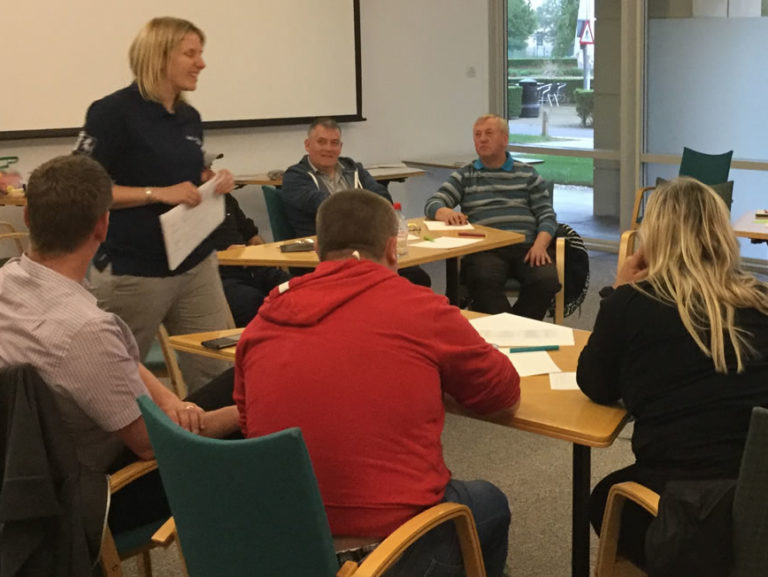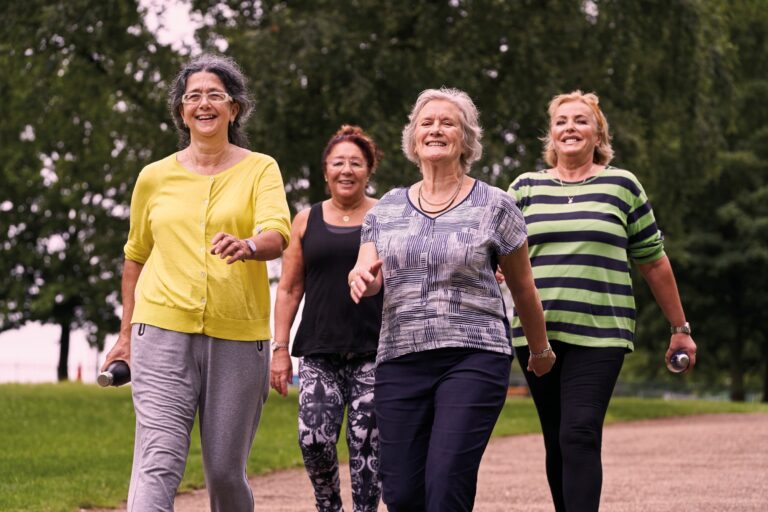Together Fund Impact Report
Overview
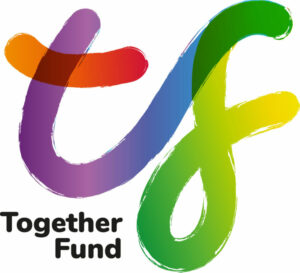 Sport England’s Together Fund was launched in 2023 as a continuation of the Tackling Inequalities Fund, which was set up in April 2020 as part of a support package to help the sport and physical activity sector through the Covid-19 pandemic and beyond. The Together Fund saw an additional £20 million of National Lottery funding committed to support groups across England that were disproportionately affected by the pandemic, significantly affecting their ability to be physically active.
Sport England’s Together Fund was launched in 2023 as a continuation of the Tackling Inequalities Fund, which was set up in April 2020 as part of a support package to help the sport and physical activity sector through the Covid-19 pandemic and beyond. The Together Fund saw an additional £20 million of National Lottery funding committed to support groups across England that were disproportionately affected by the pandemic, significantly affecting their ability to be physically active.
The Together Fund focused on four key audiences: Disabled people, people with long-term health conditions, lower socio-economic groups and culturally diverse communities. Our Tackling Inequalities Report captures what partners and communities told us about these key audiences, the barriers they face to activity and how best to encourage them to be active.
With this knowledge, Active Kent & Medway reached out to those most in need by working with new and existing partners delivering on the ground, and in the know, to pull together projects targeting potential beneficiaries. Throughout the course of the Fund, we listened to our partners and our approach to the resilience package reflected this: signposting to training opportunities and partner support; delivering workshops; hosting sharing and learning events; and offering additional workforce development opportunities and funds.
The following report highlights the successes, the impact and the learnings from the Together Fund, to assist funders, partners and deliverers who support those most in need. We would like to thank all the organisations and participants who contributed to this report. Thank you for sharing your stories behind the projects.
Headline Figures
£290,473
Awarded
66
Projects
6,352
Participants
Gender
50%Female
Ethnicity
42%Culturally diverse
Disability
21%All disabilities
All figures correct as of January 2024.
Organisations
We worked with 51 organisations, 16 of whom were new funded partners for Active Kent & Medway. We worked with these organisations to understand their needs and their local communities to develop projects that supported their audiences to become more active. Organisations told us that the fund raised the organisations profile, built up their evidence base for physical activity and said that their staff now have better knowledge and understanding of the communities they’re working in.

67% said it helped them develop new partnerships with other organisations
55% said it increased their confidence to deliver sport and physical activity
86% said it helped attract new participants
95% said it helped to offer more opportunities for people to be active
45% said it helped upskill people in their organisation
39% said it provided them with recognition for the work they do in the community
“The success of physical activity supporting the wellbeing of those in asylum seeking accommodation has been recognised by Central Government. Investment into the provision of physical activity will be taken forward to additional sites in the UK.”
Kent Police
Organisational learnings
1. Recruit deliverers representative of your participants.
Many people are reluctant to engage in physical activity due to the belief that ‘it is not for people like me’. Look at ways you can use your local community, volunteers and deliverers to break down these barriers and create role models.
2. Involve participants in the design, delivery and evaluation.
Make sure voices are heard, and perspectives and experiences considered throughout the programme. Communicate changes to demonstrate that feedback is valued and you’re responding to their needs. Empower participants. This will help with programme development, improvement and sustainability.
3. Embrace partnership working.
Working with other local organisations can bring together knowledge, skills and resources, enhancing opportunities. Tapping into different experiences and opinions can create joined up solutions and new ideas.
4. Deliverers need to understand participant’s health conditions.
Look to recruit deliverers based on their experiences and understanding of the issues that matter to people with the condition. If this is not possible, look at ways you can upskill your workforce to increase their confidence, knowledge and understanding. Ask the participants, as they know what is workable.
5. Build in time to reflect.
Reflection is a valuable skill and needs to be protected. It helps identify strengths, challenges and areas for improvement, as well as celebrating achievements and sharing feedback. Ask your team what went well, less well and consider what you will do differently next time.
“It was a pleasure having everyone in the library. Customers that I had spoken to were enjoying the sessions and they liked the location and group dynamics. The customer that joined on the last session told me that she was sad that she hadn’t joined in before, it was so much fun.”
Moving Memories Dance
Communities
For many organisations, the Together Fund offered opportunities to develop and strengthen ties with their local communities. It allowed them to respond to local need, identify support and break down barriers. The fund opened new, safe spaces for the community, reduced social isolation and encouraged communities to access other services in their local area.
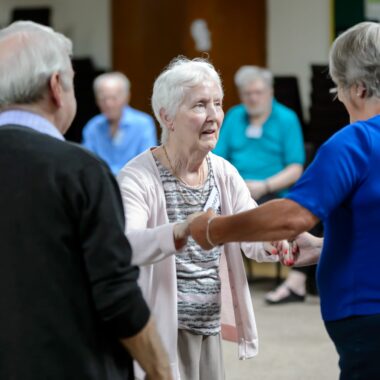
74% said the community has more confidence to be active
79% said individuals have reconnected with their local community
88% said the community now has more opportunities to be active
76% said it helped people from different backgrounds mix and connect
84% said it helped the community manage their physical health
84% said it helped the community manage their mental health
“Being part of this intervention has introduced me to a community of understanding individuals who are facing similar struggles. We motivate each other, share stories, and provide emotional support. It’s like having a second family.”
Places for People Leisure
Community learnings
1. Go to where your participants are.
Use existing networks, groups and partners to reach your participants. Find places and locations that are visible, accessible and familiar. Specialist sport facilities are not always necessary. The right place can be a park, community hall, car park or green space.
2. Have a visible presence in your local community.
Get involved and show up in your local community to help build valuable and meaningful relationships. Communities remember how you made them feel. By seeing the positive difference you’re making to the community it will make it easier for people to trust you.
3. Co-creation of activities is vital.
Work with your local community and participants to ensure that goals, challenges and needs are reflected in your project. Co-creation elevates participants experiences, makes them feel valued and gives them the ability to shape their own experiences and experiences of others.
4. Building trust is important.
Get to know your local community. Build trust and rapport through listening, acknowledging and actioning community needs. Understand the community or participant stories to find out where activity fits into their lives.
5. Upskill members of the community to deliver.
Find participants and volunteers that could become part of your wider workforce. Find out their skills, develop confidence and competence all whilst developing project sustainability and providing members with additional and transferable skills.
“When I first joined the ‘Moving Well’ program, my confidence was low, I was not fluent in English and didn’t drive, but still wanted to do something about getting physically fitter and improve my communication skills. The activities helped me achieve this. I loved meeting my community friends and women from other countries. During the project, I trained as a swimming lifeguard and a community health researcher, which helps me to earn money. This has made me more financially independent, confident, and raised my aspirations, the outcomes I was not expecting to achieve when I joined the project.”
Medway Diversity Forum Participant
Participants
The Together Fund has shown the positive impact that being active can have on people’s lives. Many participants started a new habit, sustained their activity and became active members of their local activity communities.

78% said they enjoyed participating in the activity
73% said it helped them manage their mental health
73% said it helped them build new friendships
68% said they are now more confident to be active
72% said they are now doing more activity than they did before
87% said it helped them manage their physical health
“Joining in the chair dance was such good fun. Me and my friends didn’t even realise we were exercising. Chatting and joining in the songs, we hadn’t noticed we were all actually moving! best bits…I have a few, meeting new people, enjoying the music and noticing my body not aching so much after the classes.”
Friendly Faces of Kent
Personal Stories
Linda’s Rehabilitation Story
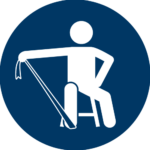 “I suffered a heart attack and my consultant suggested that I build up my strength and cardiovascular ability to help with my recovery. Lordswood Leisure Centre recommended their Let’s Get Active sessions aimed at older people who had lost their confidence and have underlying conditions. It’s great to see improvements in my health and wellbeing, I can exercise safely with help on hand to explain good technique and monitor progress.”
“I suffered a heart attack and my consultant suggested that I build up my strength and cardiovascular ability to help with my recovery. Lordswood Leisure Centre recommended their Let’s Get Active sessions aimed at older people who had lost their confidence and have underlying conditions. It’s great to see improvements in my health and wellbeing, I can exercise safely with help on hand to explain good technique and monitor progress.”
Sarah’s Boxing Story
 “My mental health is very poor due to personal circumstances, and I’ve been struggling. I wanted to find a class that might help me mentally and physically. This class is all those and more. The other people are so lovely, welcoming and encouraging. The coach is amazing, so much support, encouragement and inclusion, whatever your ability. It’s a lifeline for me.”
“My mental health is very poor due to personal circumstances, and I’ve been struggling. I wanted to find a class that might help me mentally and physically. This class is all those and more. The other people are so lovely, welcoming and encouraging. The coach is amazing, so much support, encouragement and inclusion, whatever your ability. It’s a lifeline for me.”
Brian’s Gardening Journey
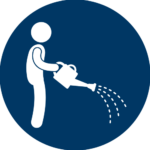 “I joined the sessions because I had been confined to a bed for almost 3 years and was suffering from depression. Getting out and meeting new people was a priority for me. My reason for going became much more about the people there and the social aspect of my time there. I then went on to volunteer woodworking workshops, it was my own way of giving back which helped me immensely.”
“I joined the sessions because I had been confined to a bed for almost 3 years and was suffering from depression. Getting out and meeting new people was a priority for me. My reason for going became much more about the people there and the social aspect of my time there. I then went on to volunteer woodworking workshops, it was my own way of giving back which helped me immensely.”
Lucy’s Running Story
 “I have been struggling with my mental health and work-life balance for a long time. I used to be really fit but now struggle to fit it all in. I needed something to help motivate me and make me feel better. Running helps that. I have been able to see that small things I do really can make a difference, and that it is all do-able.”
“I have been struggling with my mental health and work-life balance for a long time. I used to be really fit but now struggle to fit it all in. I needed something to help motivate me and make me feel better. Running helps that. I have been able to see that small things I do really can make a difference, and that it is all do-able.”
Our Learnings
Through the Together Fund, Active Kent & Medway has strengthened local connections, developed the workforce and brought the team together. Moving forward, the learnings and ways of working will now be embedded within all our work across Kent and Medway.
What went well?
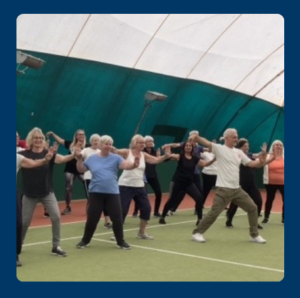 1. Solicited application process
1. Solicited application process
Time spent working up projects with applicants meant that we were fully informed about the project and could provide organisations with the necessary knowledge and support and upskill them for future bids. We will look to embed this approach, where possible when administering funds in the future.
2. Flexibility of approach
Having a flexible approach to the fund allowed us to deliver what worked well for us and the groups locally. Things do not always go to plan. We learnt that that’s okay and we were able to work with organisations to come up with local solutions together. This was a much-welcomed approach from Sport England.
What went less well?
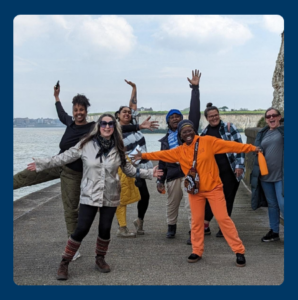 1. Funding requirements
1. Funding requirements
Although outlined in their Service Level Agreement, some funding recipients were not clear on what was required of them in terms of promotion and monitoring. We are looking at ways we can provide information in a format that is more accessible and clearer for organisations to understand and get the most out of their project.
2. Time and capacity
Whilst our internal processes were robust, it took time to check in and chase organisations for documents. Occasionally, it was challenging to keep track of projects. Some needed more hand holding than others. We’re looking into ways that we can make our internal processes more efficient and streamlined.
What did we learn?
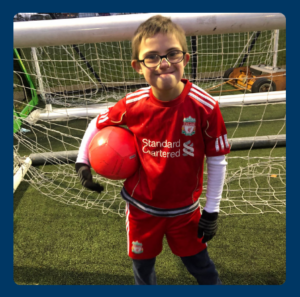 1. Long-term financial sustainability
1. Long-term financial sustainability
Organisations suggested longer-term funding or gradually reducing funding over time for established projects with proven impact. This would allow projects to maintain momentum and prevent them from losing participants, staff and resources during unfunded periods.
2. Local trust and understanding
Using local partners to identify the audiences that needed the most support in their community was an effective way of reaching the right groups. Early discussions allowed us to work up projects that would have the greatest impact and longevity.
The Future
The impact of the Together Fund continues. Connections have been made between local organisations and trust has been built between community groups and participants. This will continue to bring about changes locally.
Through the county’s Move Together Strategy, we will continue to harness the power of physical activity and sport to tackle the inequalities that prevent key community groups from enjoying the benefits that moving more can bring. United together, we Move Together.
Contact Us
If there’s anything in this report that you’d like to discuss or find out more information, please email activekent@kent.gov.uk and one of the team will be in touch.
If you’re a community group or organisation working with any of the under-represented groups listed above and you’re looking to engage them in sport and physical activity, please do get in touch or register your interest via our contact form.


